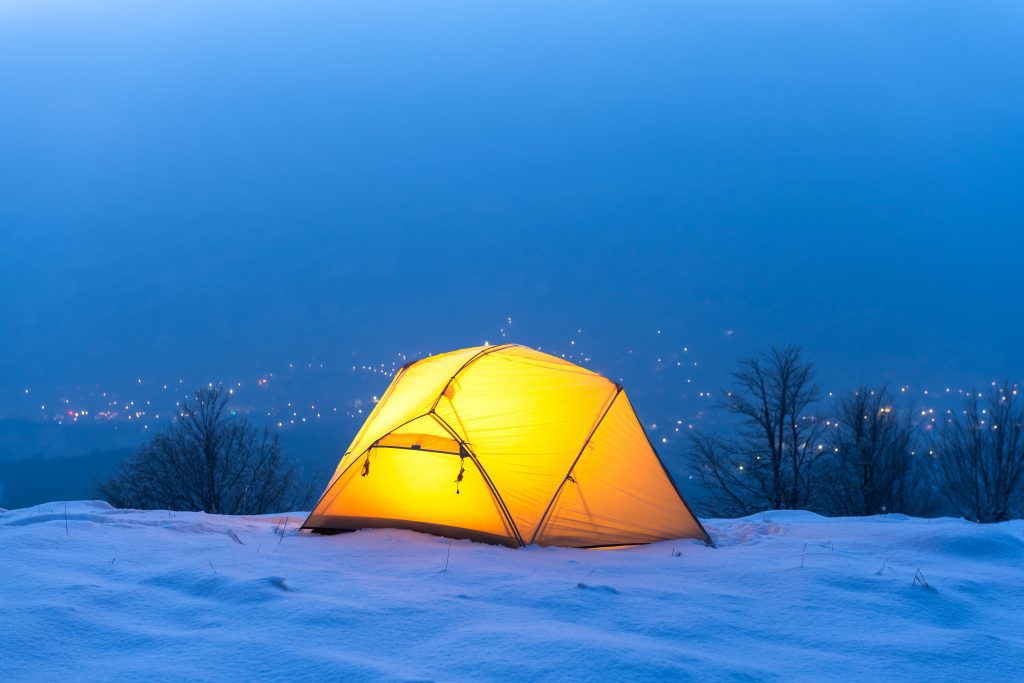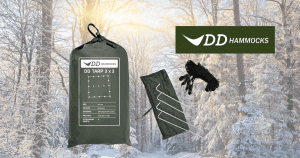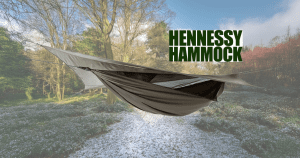We’ve all been there—tucked into our sleeping bags on a crisp night, staring at the stars, only to wake up shivering at 3 a.m., wondering if it’s possible to freeze while dreaming. But that’s where the Rab Ascent 700 Sleeping Bag comes in, ready to make sleepless, shivery nights a thing of the past. Whether you’re planning a camping trip in the Scottish Highlands, navigating through the peaks of Snowdonia, or simply prepping for a cold-weather adventure, this bag promises to keep you warm and cosy.
In this Rab Ascent 700 Sleeping Bag review, we’ll break down its key features, compare it to competitors, and highlight why it’s a must-have for your next camping escapade. If you’re tired of packing extra socks just to survive the night, you’re in for a treat!
What is the Rab Ascent 700 Sleeping Bag?
Rab, a brand rooted in the mountains of the UK, was founded in 1981 by mountaineer Rab Carrington. Known for its high-quality outdoor gear, Rab’s products are trusted by adventurers around the globe. The Rab Ascent 700 Sleeping Bag is a perfect example of their commitment to performance, designed for cold-weather, three-season camping trips where temperatures flirt with freezing.
This sleeping bag is part of Rab’s “Ascent” range, which strikes a balance between technical, high-performance gear and comfort for the everyday adventurer. With 700g of ethically sourced duck down and hydrophobic treatment, the Rab Ascent 700 offers excellent insulation while still being practical and durable for regular campers and trekkers.

Key Features of the Rab Ascent 700 Sleeping Bag
1. Insulation and Warmth
The heart of any sleeping bag is its ability to keep you warm, and the Rab Ascent 700 excels in this department. Filled with 700g of European duck down, this bag offers a great warmth-to-weight ratio. Duck down is known for its ability to trap heat efficiently, keeping you insulated on even the chilliest nights. With a fill power of 650, this bag is built to keep the cold out without adding unnecessary weight to your gear.
What’s more, Rab uses Nikwax Hydrophobic Down, a treatment that makes the down water-resistant, so it won’t lose loft or warmth when exposed to moisture. This is a lifesaver when condensation creeps into your tent or you get caught in the rain.
- Comfort Temperature: -2°C (28°F)
- Limit Temperature: -8°C (17°F)
- Extreme Temperature: -27°C (-17°F)
But what does these ratings actually mean?
Comfort Temperature: -2°C (28°F)
This is the temperature at which the average person (usually a woman, as women tend to feel colder than men) will feel comfortably warm while sleeping. In other words, if the temperature outside is around -2°C (28°F), you should be snug and toasty inside the bag without needing extra layers of clothing. This is the rating you should focus on if you like to sleep warm and don’t want to rely on extra clothing for warmth.
Limit Temperature: -8°C (17°F)
The Limit Temperature is the lowest temperature at which the average person (usually a man, as men tend to sleep warmer than women) can sleep without feeling too cold, though they might not feel as cosy as they would at the comfort rating. Below this temperature, you’d likely need to sleep in thermal layers, curl up, and perhaps zip the bag up tightly to stay warm. If you’re used to cooler conditions or plan to camp in chilly weather, this is an important rating to consider.
Extreme Temperature: -27°C (-17°F)
This rating is more of a survival measure. At the Extreme Temperature, the sleeping bag can help prevent hypothermia in life-threatening situations, but you’ll likely feel very cold and uncomfortable. It’s not a rating you want to push on a regular trip! The idea is that if the temperature drops to -27°C (-17°F), the bag can keep you alive, but you should aim for milder conditions or bring extra gear for this kind of cold.
How to Use These Ratings
- Comfort Temperature is your go-to if you want to sleep comfortably without layering up.
- Limit Temperature is for when you’re okay with cooler conditions and might wear extra layers to stay warm.
- Extreme Temperature is more about survival than comfort—you’ll want to avoid camping in temperatures this low unless absolutely necessary.
For most three-season camping, focus on the Comfort and Limit Temperatures, and always remember that how warm you feel can depend on factors like your metabolism, what you’re wearing, and the conditions inside your tent!
These ratings mean the Rab Ascent 700 Sleeping Bag is perfect for three-season adventures in colder climates. Whether you’re hiking through frosty forests or camping on a windy mountaintop, this bag will keep you toasty.
2. Construction and Durability
Rab didn’t cut any corners on the build quality of the Ascent 700. The outer shell is made from Pertex Quantum, a lightweight but durable material that’s both windproof and water-resistant. This fabric not only enhances the overall warmth but also helps protect the down from dampness, dirt, and abrasion.
Inside, the trapezoidal baffle construction ensures that the down stays evenly distributed. No one wants cold spots, and this design helps prevent the down from shifting around, so you stay warm throughout the night.
Additional features include:
- Adjustable Hood: The hood cinches down around your head to trap heat, keeping your head and neck warm—key areas for heat loss.
- Draft Collar: A down-filled baffle that sits around your shoulders, stopping warm air from escaping.
- Anti-Snag Zipper: The two-way YKK zipper is designed to avoid catching on fabric and allows for easy venting if you get a bit too warm during the night.
3. Comfort and Fit
If you’re the type of camper who tosses and turns in the night, you’ll love the roomy fit of the Rab Ascent 700. Unlike many mummy-style sleeping bags, this one offers a little extra space without sacrificing warmth. It’s cut with a wider girth to allow more freedom of movement, so you won’t feel like a burrito when you zip it up.
Available in two sizes:
- Regular: Fits up to 6 feet (183cm)
- Extra Long: Fits up to 6’6″ (200cm)
Despite its generous fit, the Ascent 700 still packs down well. The regular version weighs 1.25kg (44oz), making it suitable for most backpacking trips. While it’s not the lightest sleeping bag on the market, it offers a great balance of comfort, warmth, and packability.

Rab Ascent 700 Sleeping Bag vs Competitors
How does the Rab Ascent 700 measure up to some of the other cold-weather sleeping bags on the market? Let’s pit it against a few top competitors.
| Feature | Rab Ascent 700 | Mountain Equipment Helium 600 | The North Face Blue Kazoo | Sea to Summit Ascent AcIII |
| Weight (Regular) | 1.25kg (44oz) | 1.04kg (36oz) | 1.32kg (46oz) | 1.16kg (41oz) |
| Fill Power | 700g duck down | 600g duck down | 650g goose down | 750g duck down |
| Temperature Rating (Comfort) | -2°C (28°F) | -1°C (30°F) | -9°C (15°F) | -5°C (23°F) |
| Hydrophobic Down | Yes | Yes | Yes | Yes |
| Price | £340 ($415) | £320 ($390) | £400 ($490) | £380 ($465) |
Rab Ascent 700 vs Mountain Equipment Helium 600
The Mountain Equipment Helium 600 is a lighter option, making it a great choice for those who need to save every ounce. However, it’s rated slightly less warm than the Rab Ascent 700. While the Helium 600 has a similar hydrophobic treatment and durable outer shell, you might want to go with the Rab Ascent 700 for colder conditions, especially when venturing into sub-zero temperatures.
Rab Ascent 700 vs The North Face Blue Kazoo
The North Face Blue Kazoo is another popular choice for three-season camping, offering a higher warmth rating at -9°C (15°F). However, it’s also heavier and pricier than the Rab Ascent 700. While the Blue Kazoo has a higher fill power goose down, the Rab Ascent 700 is still a better deal if you’re not venturing into extreme cold.
Rab Ascent 700 vs Sea to Summit Ascent AcIII
For those looking for a lighter bag with higher fill power, the Sea to Summit Ascent AcIII is an excellent choice. However, it comes at a higher price point. While it offers excellent warmth-to-weight performance, the Rab Ascent 700 is more budget-friendly without sacrificing much in terms of insulation or features. If you’re after value, the Rab is your go-to.
Pros and Cons of the Rab Ascent 700 Sleeping Bag
Pros:
- Exceptional warmth with 700g of hydrophobic down.
- Durable construction with Pertex Quantum fabric.
- Roomier fit than many mummy bags.
- Ideal for cold-weather, three-season camping.
- Ethical sourcing of down and use of Nikwax treatment.
Cons:
- Heavier than some competitors.
- Not ideal for extreme winter camping (below -8°C).
- Slightly bulkier to pack than ultralight options.
User Reviews
Many users rave about the warmth and comfort of the Rab Ascent 700 Sleeping Bag, particularly praising the roomier fit and reliable performance in cold, wet conditions. Some mentioned that while it’s not the lightest sleeping bag, it’s a trade-off they’re willing to make for the extra insulation and durability. A few users noted that the stuff sack could compress the bag a bit more, but overall, it’s a highly rated product for cold-weather adventurers.
Care and Maintenance Tips
To get the most out of your Rab Ascent 700 Sleeping Bag, follow these tips:
- Storage: Avoid leaving your sleeping bag compressed for long periods. Instead, store it in a large, breathable cotton sack to maintain loft.
- Cleaning: Hand wash or machine wash on a gentle cycle with a down-specific detergent. Tumble dry on low with clean tennis balls to help restore the loft.
- Repairs: Keep an eye out for any damage to the outer shell. Small tears can be patched easily, but it’s better to catch them early to avoid down loss.
Sleeping Bag and Sleeping Mat: A Perfect Pair
To get the best warmth and performance from your Rab Ascent 700 Sleeping Bag, it’s essential to pair it with a high-quality sleeping mat. A good mat provides insulation from the cold ground, preventing heat loss and helping you sleep comfortably through the night. We recommend the Exped MegaMat 10 for a perfect companion to your Rab sleeping bag.
The Exped MegaMat 10 is an inflatable sleeping mat that’s incredibly well-insulated and luxuriously comfortable. Its R-value of 8.1 (basically, how well it resists heat loss) means it’s perfect for use in cold conditions, ensuring you stay warm no matter how chilly the ground gets. It’s also 10 cm thick, providing plenty of cushioning for a restful sleep after a long day of hiking or trekking.
Plus, its self-inflating design makes setup easy—no need to huff and puff after you’ve already exhausted yourself outdoors! When paired with the Rab Ascent 700, this combo will keep you warm, cosy, and insulated from the ground, allowing your sleeping bag to perform at its very best.
FAQs
1. Is the Rab Ascent 700 Sleeping Bag suitable for winter camping?
The Rab Ascent 700 Sleeping Bag is designed for cold-weather camping, but it’s primarily intended as a three-season bag. Its comfort rating of -2°C (28°F) and limit rating of -8°C (17°F) make it ideal for spring, autumn, and milder winter trips. If you’re camping in freezing temperatures but not in deep winter conditions, this bag will keep you warm. However, for extreme winter camping (below -8°C or in snowy environments), you might want to consider a dedicated winter sleeping bag with a lower temperature rating, like the Rab Neutrino Pro 900.
2. How does the Rab Ascent 700 Sleeping Bag perform in wet conditions?
Thanks to the Nikwax Hydrophobic Down treatment, the Rab Ascent 700 Sleeping Bag offers solid performance in damp conditions. The hydrophobic down resists absorbing moisture, which helps maintain the loft and insulation even when exposed to humidity or condensation. Additionally, the Pertex Quantum outer fabric is windproof and water-resistant, offering an extra layer of protection. However, like all down sleeping bags, it’s not completely waterproof, so it’s best to use it with a waterproof tent or bivy sack if you expect heavy rain.
3. What is the difference between duck down and goose down in sleeping bags?
Duck down and goose down are both excellent insulators, but there are some key differences. Goose down generally has a higher fill power, meaning it can provide more warmth per gram, making it more effective for extremely cold environments. Duck down, like the 700g used in the Rab Ascent 700, is slightly more affordable while still offering great warmth and packability. For most three-season camping trips, duck down is more than sufficient and provides excellent value for its warmth-to-weight ratio. Unless you’re venturing into extreme alpine conditions, the difference won’t be too noticeable.
4. What is the best way to store the Rab Ascent 700 Sleeping Bag?
To extend the lifespan of your Rab Ascent 700 Sleeping Bag, it’s essential to store it properly. After each trip, remove the sleeping bag from its compression sack and store it in a large, breathable cotton storage bag (often provided with the sleeping bag). Storing it loosely helps preserve the loft of the down, which is crucial for maintaining insulation. Avoid keeping it compressed for long periods, as this can cause the down to lose its fluffiness and warmth. Also, make sure it’s completely dry before storing it to prevent mould or odours.
5. How does the Rab Ascent 700 Sleeping Bag compare to synthetic sleeping bags?
Down sleeping bags like the Rab Ascent 700 are generally warmer and more compressible than synthetic bags. Down offers superior warmth-to-weight ratios, making it ideal for backpackers and cold-weather campers who need to save space and weight. However, synthetic bags excel in wet conditions since they retain warmth better when wet and dry faster. The Rab Ascent 700, with its hydrophobic down treatment, combines some of the moisture resistance of synthetic bags with the warmth and packability of down, making it a great hybrid choice for cold but potentially damp environments.
Final Verdict: Should You Buy the Rab Ascent 700 Sleeping Bag?
If you’re planning a cold-weather camping trip and want a reliable, high-quality sleeping bag that won’t break the bank, the Rab Ascent 700 Sleeping Bag is an excellent choice.





